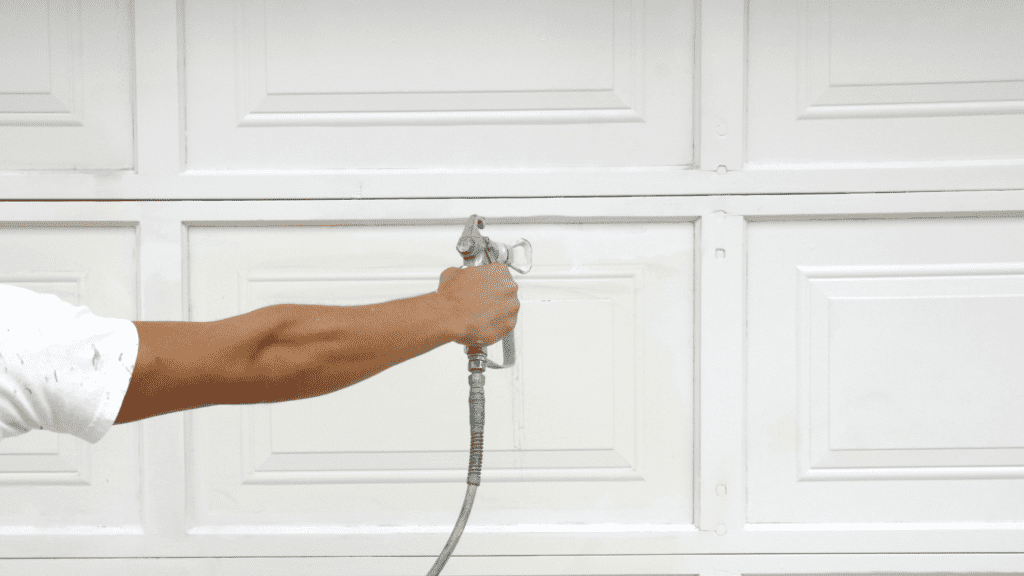Learning how to use a paint sprayer is quite easy. You need to know when to use it instead of the time-tested method of working with a paintbrush or roller.
For many of us, spring is about a new beginning. Long gone are the dull days of winter and it is time to add some color to your home.
Using a paint sprayer is the key to making it happen but many people are afraid of using it. This is mainly because they don’t know how to use a paint sprayer.
A paint sprayer is an amazing tool that is perfect for a wide range of painting jobs.
In the following section, we will provide you with some tips on using a paint sprayer and some awesome project ideas for adding some color to your home.
Paint Sprayer…Friend Or Foe?

First off, a paint sprayer is a great tool, but with all tools, there is a time and place to use them. Just because you have a paint sprayer doesn’t mean that it should be used for all painting jobs.
It is a perfect tool if you are looking to paint a large area like a room in your home, on ceiling, a fence, or the siding of your house.
If you are planning to use the paint sprayer indoors, it is better if the room is empty. This is because the paint particles in the air can get everywhere.
So, make sure to remove all the furniture or have lots of drop sheets covering everything. A paint sprayer is also a great tool for painting furniture and trim.
When learning how to use a paint sprayer, it is a good idea to find something outdoors to practice painting first before jumping into a project.
Another important thing to consider is the temperature. If it is too cold, the paint sprayer has a greater chance of clogging and if it is too warm the paint can dry too quickly.
When using a paint sprayer, you should make sure to wear protective gear such as a face mask and goggles.
How To Use A Paint Sprayer
- Make sure that the paint is well-mixed. Consider pouring the paint through a filter to make sure there is no debris that can clog the sprayer. Most problems happen when the sprayer gets clogged.
- Practice using the paint sprayer. Depending on the paint sprayer you have you may be able to adjust the spray reach and quantity of paint being applied. Test out moving your arm and then your whole body to get the right rhythm before starting your project.
- Once you are in rhythm, it is time to start painting for real. One thing to make sure of is that you are applying the paint consistently. If you rush, the paint job will look uneven. TIP: Keep a rag or cloth handy so you can wipe the paint sprayer’s nozzle. When compared to rollers, paint sprayers use way more paint.
- If you get to an area where there is an overlap, make sure to move quickly over the spot so as not to apply too much paint.
- Time to inspect your work. If you missed any spots, you could just use a roller or brush to fill them in. Practice makes perfect. So, if you don’t get it right on the first try, give it another go. But this time, take a bit more time to practice.
Now that you know how to use a paint sprayer, why not try a few of these projects to add some color to your home.
You might also be interested in checking out the paint estimate calculator.
Painting Projects

Painting Furniture
A quick and easy way to change the appearance of a room is to paint the furniture.
One option is to paint them to match the same color as the wall. This gives a cozy and trendy feeling to your home, and the effect is timeless.
A cheap trick to get a site-built effect is to buy a white shelf or wardrobe (for example, from IKEA) and repaint it in the same color as the wall. The result is beautiful and gives the whole room a luxurious lift!
Get That Little Extra With The Right Color
These days, earthy tones dominate most homes. Why not break that with a splash of color?
Color a wall, a bedroom, or maybe a piece of furniture in a bold color for some contrast. Yellow, green, and powder pink with tones of gray are the colors that have been trending lately.
Semi-Painted Walls
Yes, you read that right. Half paint your walls. Choose two base colors or two strong colors and let them meet in a line. This can make the room unique and more personal.
